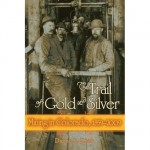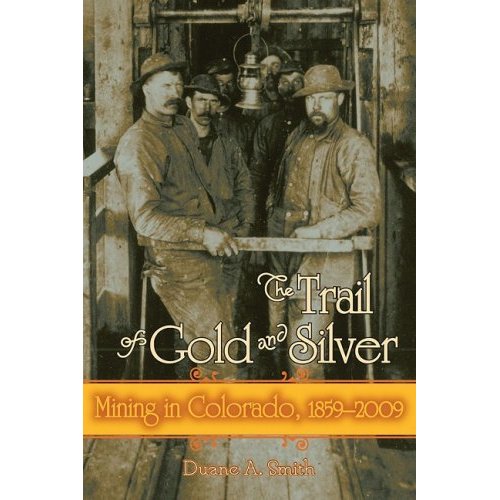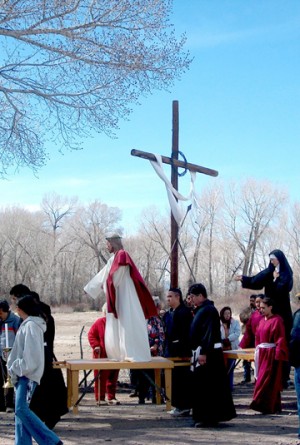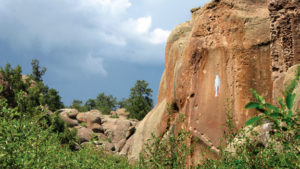The Trail of Gold and Silver: Mining in Colorado, 1859-2009
By Duane A. Smith
Published in 2009 by University Press of Colorado
ISBN 978-0-87081-975-5
$26.95; vii+282 pages
Reviewed by Virginia McConnell Simmons
After chronicling nearly every facet of gold and silver mining in Colorado, from the Caribou camp to Horace Tabor and Baby Doe, Duane A. Smith has now concisely written the colorful story in The Trail of Gold and Silver. With this, his 50th published book, his friends might wonder whether The Trail of Gold and Silver is meant to be the swan song of our most prolific miner of Colorado’s mining history. Well, don’t bet the claim on it.

With a strong emphasis on social history, like a pied piper Smith leads us down fascinating roads, rather than the main highways or the remote paths of mining history. With his lively style of writing, it will appeal to general readers, while two sections of rare old photos put the human face on our mining history. Readers will also find numerous wonderful quotations from old newspapers, letters, and other contemporary accounts, which he has amassed while he was laboring as researcher, writer, and professor of history at Fort Lewis College.
Because the text compresses our state’s entire tale of gold and silver mining era into one volume of medium length, the content is limited to discussion about the events, places, and people that best illustrate it. Many of the characters in this story are anonymous prospectors, miners, and prostitutes, pushing the usual stars out of the limelight, but, not surprisingly, important locations like Leadville, Aspen, and Cripple Creek receive more attention than do isolated camps, and the Western Slope is Smith’s special passion. In this wide sweep, people who are interested in a particular mine or mining camp may discover that they must seek information about it elsewhere.
Look up St. Elmo in the index, for instance, and readers will be directed to one paragraph about the effects of declining population in the early 1900s, not to a history of the Mary Murphy Mine. As another example, I was disappointed when Smith’s text dismissively mentioned early mining at Summitville in the 1800s, but later in the book he included the more significant activities in the late 1900s, when irresponsible mining operations and a costly EPA project at Summitville affected the environment, public opinion, governmental policies, and global mining investment.Some readers may feel that important topics such as refining processes, monetary issues, organized labor and strikes, politics, railroading, laws, and investing should have been more fully developed, instead of giving space to pastimes like baseball and bicycling, and scholars may miss academic accoutrements like long lists of references and abundant footnotes. Not a heavy tome for a reference shelf, the volume also omits detailed maps, tables, designs of structure, appendices with geological data and the like.
For a broader perspective on mining history, my recommended list includes books like the classic Mining Frontiers of the Far West by Rodman W. Paul (now revised and expanded by Elliott West), The Mining Law of 1872 by Gordon Morris Bakken, and Ores to Metals by James E. Fell, Jr.



